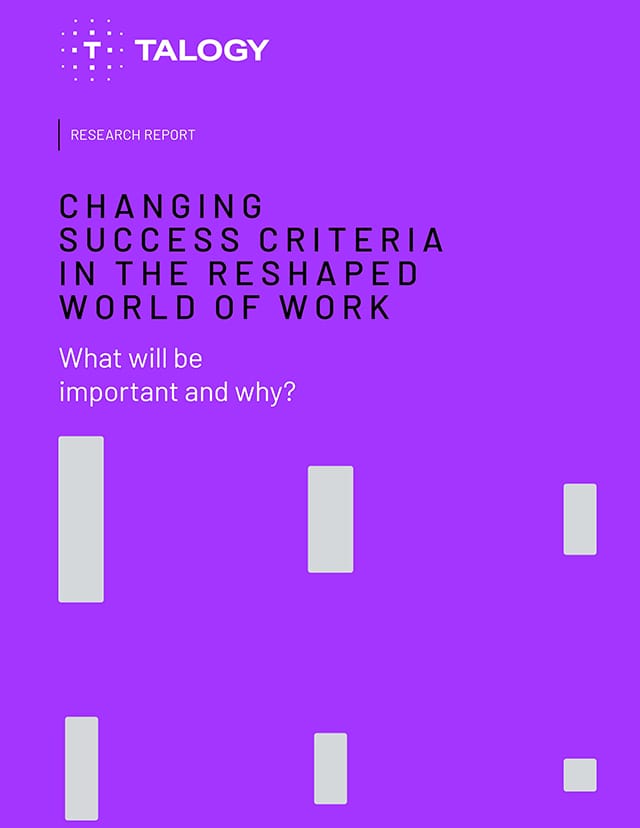Written by Lee Ferrante, Consultant
In 2014, Rainer Strack predicted that nearly all baby boomers would be out of the workforce by 2030, creating what he called the ‘Global Workforce Crisis of 2030.’ Currently, baby boomers are leaving the workforce at a rate of four million per year, 56% of which are in a leadership position.
But it goes beyond the boomers – with the large number of other employees who also left their jobs, the US is seeing a labor shortage in many industries. Companies are still adjusting their approaches to address this complicated issue and will need to continue to do so as the workforce and economy change. In light of these challenges, it is essential for organisations to adopt strategies that allow for the transfer of knowledge from baby boomers to the next generation, and at the same time also identify and develop their replacements.
Here are four approaches that can help your organisation not only prepare for the ‘2030 problem’ but also future proof your internal development processes.
1. Implement a mentor program
Information such as where potential problems might occur, the steps involved in key (and less frequent) processes, or even how much time should be spent on each step of a process is all information that can affect forward progress. A mentor program in the workplace is one way to facilitate the sharing of this knowledge and has the added benefit of showing both respect for the experienced employee as well as investment in the less-experienced employee. One simple, yet powerful step is to have the mentee sit in on the mentor’s regular meetings. This gives the mentee a wider view of the higher-level employee’s role, and also provides context for their ongoing conversations.
Mentorship also pairs nicely with succession planning by preparing prospects for the roles they may be expected to fill. Considering that voluntary turnover is still high, you might want to identify multiple key employees to pair up with an experienced employee so there is a safety net should one of your potentials also leave unexpectedly.
2. Prepare your future leaders
Companies with effective leaders are more likely to thrive in challenging times. Identifying and developing your next-level leaders keeps your business moving forward, even when things like economic circumstances or employee motivations change with little or no warning. Building up those high potential employees and providing them with opportunities for personal and professional growth will strengthen and inspire both them and those they lead. There are many different approaches toward successful leadership development, but it will depend on your company and the specific work environment.
3. Enhance leaders’ emotional intelligence
To expand on the major role of leaders in the current work climate, individuals that demonstrate Emotional intelligence (EI) are better equipped to handle a workforce that experiences uncertainty or unexpected changes. Being aware of self and of others allows emotionally intelligent leaders to respond to the needs of their colleagues and provide an environment that encourages interpersonal connections.
Since many employees base their job satisfaction on feeling appreciated, having a work-life balance, and forming close relationships with colleagues and managers, developing your leader’s EI might be the strategy you need to retain your employees.
4. Reskill your current workforce
In situations where there is a shortage of applicants but the job still needs to get done, consider the tactic of reskilling current employees so they can move into or be promoted into positions with different responsibilities. As with mentoring, this benefit is two-fold: it helps employees feel valued as the company invests in them, and it helps the company keep momentum by leveraging those with known skills. Additionally, they are already familiar with the company’s mission, purpose, and potentially, elements of the job itself.
One prime situation for reskilling the workforce for the future is when technology and robots replace physical workers for what have been historically manual tasks, such as in manufacturing and factory work. In this circumstance, some of the replaced employees, who are already familiar with the work and standards, may be good candidates to reskill into overseeing the technology performing the tasks.
Make the investment in your company’s future
In the current workforce, employers will benefit from investing in their employees’ professional development and acknowledging their value to the organisation. One final note worth making is that change takes time. The sooner you start, the more likely you will be prepared for the unexpected. Whether you are facing the departure of experienced employees or finding it difficult to simply fill open positions, making your people a priority will strengthen the organisation’s reputation and the appeal of working for you – hopefully for many years.




